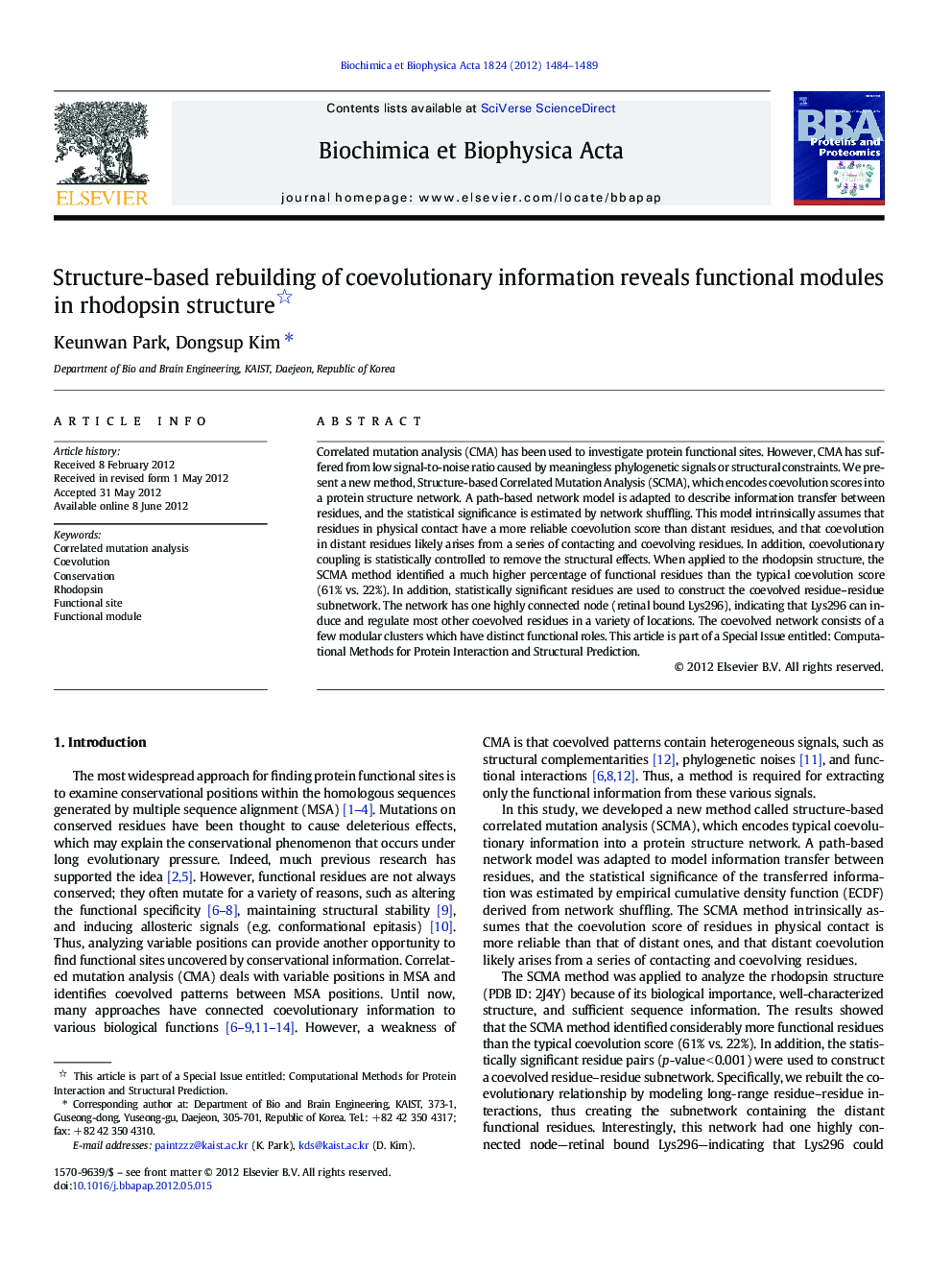| کد مقاله | کد نشریه | سال انتشار | مقاله انگلیسی | نسخه تمام متن |
|---|---|---|---|---|
| 1178412 | 1491449 | 2012 | 6 صفحه PDF | دانلود رایگان |

Correlated mutation analysis (CMA) has been used to investigate protein functional sites. However, CMA has suffered from low signal-to-noise ratio caused by meaningless phylogenetic signals or structural constraints. We present a new method, Structure-based Correlated Mutation Analysis (SCMA), which encodes coevolution scores into a protein structure network. A path-based network model is adapted to describe information transfer between residues, and the statistical significance is estimated by network shuffling. This model intrinsically assumes that residues in physical contact have a more reliable coevolution score than distant residues, and that coevolution in distant residues likely arises from a series of contacting and coevolving residues. In addition, coevolutionary coupling is statistically controlled to remove the structural effects. When applied to the rhodopsin structure, the SCMA method identified a much higher percentage of functional residues than the typical coevolution score (61% vs. 22%). In addition, statistically significant residues are used to construct the coevolved residue–residue subnetwork. The network has one highly connected node (retinal bound Lys296), indicating that Lys296 can induce and regulate most other coevolved residues in a variety of locations. The coevolved network consists of a few modular clusters which have distinct functional roles. This article is part of a Special Issue entitled: Computational Methods for Protein Interaction and Structural Prediction.
► We develop the method that extracts functional co-evolutionary interactions only.
► Path-based network model describes information transfer between residues.
► The functional coevolution network has a hub acting as a mutation regulator.
► The network reveals functional modules by network clustering.
Journal: Biochimica et Biophysica Acta (BBA) - Proteins and Proteomics - Volume 1824, Issue 12, December 2012, Pages 1484–1489